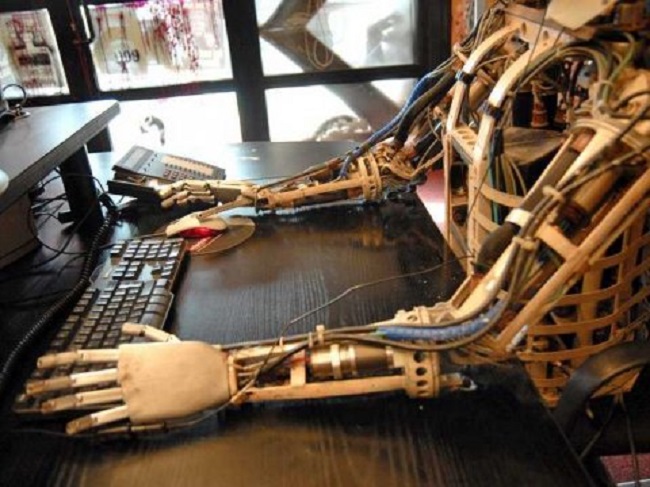Within three minutes of the earthquake that hit Los Angeles on Monday, March 17th, the LA Times already published a story detailing all pertinent information before any other newspaper ― all thanks to a “robotic journalist.” This cyber newshound is not actually an electromechanical robot, packed with motors and actuators, but an algorithm created by journalist and programmer Ken Schwencke, that automatically generates a news brief immediately following an earthquake.

As soon as an earthquake exceeding a specified magnitude is detected by the U.S. Geological Survey, Schwencke’s program, dubbed Quakebot, is alerted, extracts relevant information, and fills in a pre-written template to create a brief story; all Schwencke has to do is press “publish” and the piece is sent to a human editor for approval.
Writing a compelling story isn’t the goal, Schwencke declares, but getting “the basic information out as quickly and accurately as possible,” to not just inform the public in the shortest timeframe, but to free up human journalists from having to answer the menial questions, allowing them to assess damage and cover the personal-side of the story.

“Having spent some years as a local news reporter, I can attest that slapping together brief, factual accounts of things like homicides, earthquakes, and fires is essentially a game of Mad Libs that might as well be done by a machine.” And as Schwencke contests, an algorithm may judge the news worthiness of earthquakes much faster than people can.
A robot here, a robot there, and not before long, folks like myself will be out of work ― at least that’s the neo-luddite perspective and certainly not my own (a technophobic tech editor is a questionable tech editor). A machine may be able to compile news brief, but it cannot delicately string together words in such a way as to convey personality, tone, and voice. The lack of artificial intelligence and cookie-cutter nature of the algorithm ensures a lack in article variety. Nor can it conduct interviews with experts or gauge the newsworthiness of topics outside of what of its context. Synonyms, imagery, establishing an reader-author relation, or the various other tricks we employ are of no importance to an ego-less machine.
To put this into perspective, Slate’s Will Oremus compares Quakebot’s initial coverage to the later human-amended variant of the story.
Quakebot:
A shallow magnitude 4.7 earthquake was reported Monday morning five miles from Westwood, California, according to the U.S. Geological Survey. The temblor occurred at 6:25 a.m. Pacific time at a depth of 5.0 miles.
According to the USGS, the epicenter was six miles from Beverly Hills, California, seven miles from Universal City, California, seven miles from Santa Monica, California and 348 miles from Sacramento, California. In the past ten days, there have been no earthquakes magnitude 3.0 and greater centered nearby.
Human:
Seismologists say Monday's magnitude 4.4 temblor near Westwood could mark the beginning of the end for L.A.'s years-long “earthquake drought.”
Typically, they would expect a 4.4-sized earthquake about once a year in the Los Angeles Basin, but that hasn't happened for years.
“We don’t know if this is the end of the earthquake drought we’ve had over the last few years, and we won’t know for many months,” said Caltech seismologist Egill Hauksson.
Supplemented with quotes and background information, the human’s prose is immediately discernable; it is far more interesting to read (in my opinion). Ken Schwencke shares similar sentiments, “the way I see it is, it doesn't eliminate anybody's job as much as it makes everybody's job more interesting,” yes, far more interesting because all the initial boring details can be automated.
Quakebot is not his first; Schwencke has actually dabbled in automating news briefs long before Quakebot was programmed, having modeled a similar “cookie-cutter news” method of reporting crime statistics LA Time’s coverage area. Similarly, sports publics have also experimented with algorithm-driven approaches. This is simply a matter of efficiency where it is needed.
Advertisement
Learn more about Electronic Products Magazine






